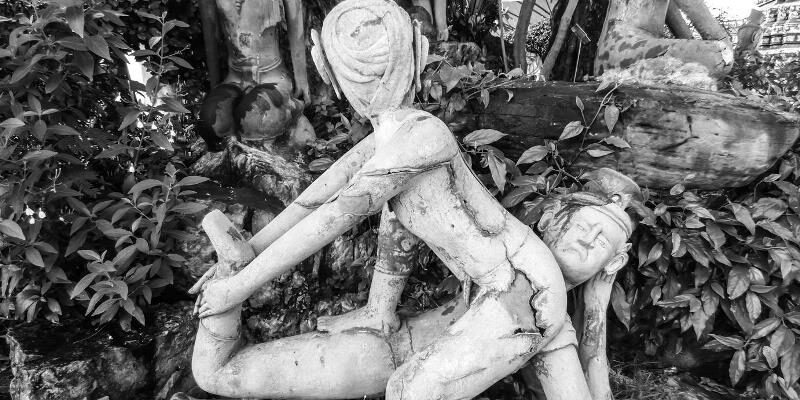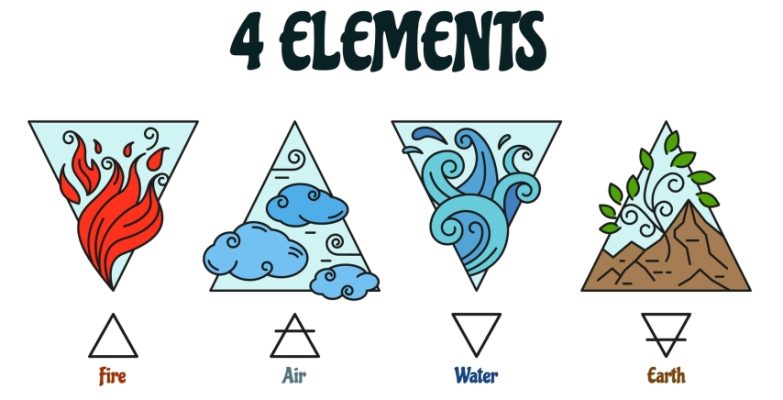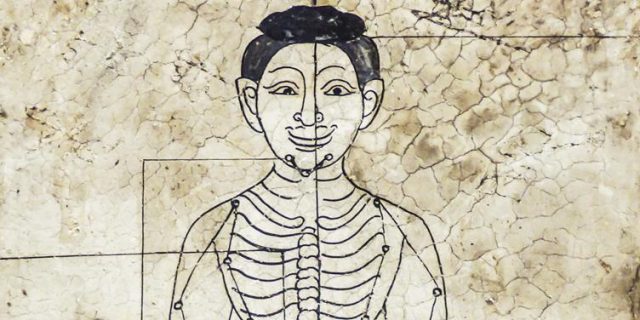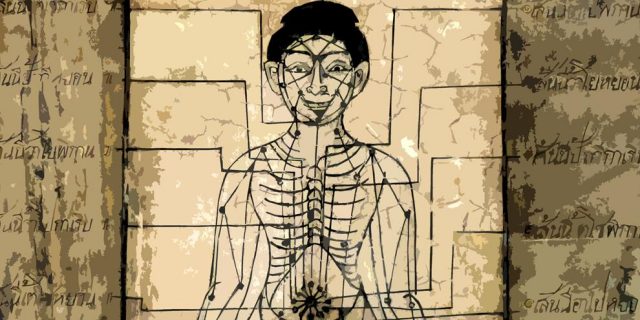
The basic principle of every branch (including Thai Massage) of Thai Traditional Medicine is the knowledge of the Four Body elements, and their functions and their interrelations which affect health or illness of the individual. In Thailand, the Four Body elements are regarded as the foundation of the body and the foundation of life.
Diagnosing diseases according to the Four Elements take many years of training and practice to develop properly. Traditionally, in Thailand, Thai Healing Arts students would study under competent teachers for decades before they were considered healers. However, some basic knowledge with regard to the Four Elements theory, diagnostics, and subsequent treatments can be outlined.
Table of contents:
⦿ Water Element
⦿ Wind Element (Air)
⦿ Fire Element
⦿ Diagnostics
⦿ Excess or Depletion
⦿ Thai Treatments
Earth Element
Earth represents the structural organs and constitutes the physical building blocks of the body. Imbalance of the Earth Element would manifest as symptoms of the organs associated with the Earth Element. Think of health issues like bone disease, tumors, skin diseases, and other earthy disorders.
Water Element
Water represents all liquids, phlegm, and semi-solids flowing in and being absorbed by the body. The Water Element resides in the Earth Element and requires the Wind Element for movement.
Imbalance of the Water Element can show as symptoms of the organs associated with the Water Element such as blood disease, eye disorders, venereal and renal diseases, bladder or urinary tract infections or stones, diabetes, or any disease showing in abnormal urine or other bodily liquid discharge.
Wind Element (Air)
Wind in Thai Traditional Medicine — usually called Lom — represents energy that controls movement in the activities and functions of the body: upward wind, downward wind, abdominal wind, wind in the bowels, wind in blood circulation, wind penetrating all over the body and respiration (breath). Wind represents and promotes lightness and circulation throughout the body.
Imbalances of the Wind Element can show as symptoms of the organs associated with the Wind element such as pneumonia, cough, mucous congestion, tuberculosis, bronchitis, other respiratory infections, fainting, dizziness, and arthritis. The Wind Element is considered to be the most important element in supporting mobility, strength, longevity, and vitality.
Fire Element
Fire corresponds to vital heat energy that warms our body, consisting of heat and Life Energy. Fire has the nature to burn, to destroy, to transform and to produce and spread Life Energy.
Fire relates to the other elements in so far as it supports the Wind Element and Water Element to flow and move with the proper temperature. Fire also keeps the Earth Element warm, with that maintaining the body organs and systems in a healthy condition.
Imbalances of the Fire Element primarily show as diseases of the heart and circulatory system i.e. including our digestive, blood circulation, and lymphatic system.
Diagnostics
A complete idea of the organ system involved in the disease or discomforts should be developed by asking questions, observing symptoms, and palpating the body of the patient.

Thai traditional diagnostic techniques are often based on assessing the Four Body Elements (Earth, Water, Wind, and Fire), but also on checking out the client’s horoscope, simply “seeing” or “feeling” energy imbalances, intuition, observing posture, or applying the Indian Ayurvedic Tridosha system, to name some of the most important techniques used.
For those who already know the Ayurvedic Tridosha system, this can be integrated into Thai diagnosis by remembering that surplus Vata relates to excess of the Air/Wind element, surplus Pitta relates to excess of Fire and Water elements, and surplus Kapha relates to excess of Earth and Water elements.
Palpation, by the way, is a very important technique used and can give information about hot and cold areas, tightness or weakness, tensions and contractions, mobility issues, correct position, location and state of organs, and the like. Certainly, proper assessment done the Thai way takes years of training and experience, and we should not take this lightly.
Other common diagnostic techniques such as phrenology, reflexology, tongue and pulse diagnosis are likewise used by Thai traditional healers, although they originally belong to Traditional Chinese medicine and are seen as later additions to the Thai healing arts system.
Excess or Depletion

After the affected organ system is identified, the Thai therapist will try to determine whether the disorder is manifesting as excess or depletion.
Excess is typically displayed by tension, swelling, sharp pains, fever or high body temperature, skin issues, redness, bloat, high blood pressure and fast pulse. The patient that experiences excess often shows tension, irritability, anxiety, sleeplessness, and shallow breath. In general one could say that excess manifests outwardly.
Depletion alternatively, is more typically shown by thinness, a lack of appetite, dull pains, paleness, atrophy, weariness, low blood pressure and slow pulse, coldness and low body temperature. The patient that experiences depletion often feels weak, tired, sleepy, dizzy and nauseous. Here we could say that depletion is manifested more inwardly.
Thai Treatments
After diagnosis, the Thai healer will treat the patient in order to either stimulate or soothe the particular organ system or other bodily systems.

Naturally, the sort of treatment will also depend on individual healers and their specialization in either spiritual healing, herbal medicine, massage, or nutrition.
In Thai Massage, treatments will often address, work, and manipulate the Thai Sen Energy channels to promote and re-balance energy flow and levels in the patient’s body. Massage techniques used include pressure, acupressure, stretches, twists, lifts, nerve flips, and rocking, to name some.
We should keep in mind all the above points, but should also remember that even in classical contemporary medicine, diagnostic skills can sometimes be an art rather than an exact science.
Symptoms can also appear as a mix of excess and depletion, and can appear in more than one organ system making proper diagnosis difficult.


















